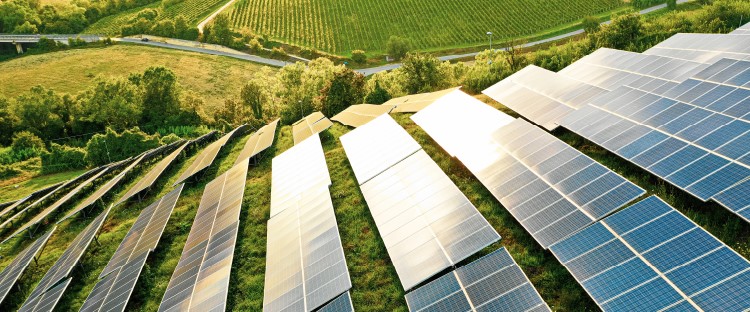China’s "16+1" Equals Much Ado About Nothing?
By Jan Gaspers, Head of the European China Policy Unit, Mercator Institute for China Studies
Nowhere else in Europe has China’s Belt and Road Initiative (BRI) been met with quite such a warm embrace as in Central and Eastern Europe (CEE). China’s large-scale financing of highways, railways, ports, and other infrastructure to better connect China to Southeast Asia, Africa, the Middle East, and Europe has clearly struck a chord with CEE leaders.
This is hardly surprising. Almost three decades after the end of the Cold War, the CEE region still displays a remarkable infrastructure gap. Estimates from July 2017 suggest that shortages in transport infrastructure financing alone in CEE and CIS countries will amount to $730 billion up to 2025. Rather conveniently, China has pledged about $15 billion in investments in CEE infrastructure since the launch of the so-called “16+1” platform in 2012. Made up of 11 EU member states (Bulgaria, Croatia, the Czech Republic, Estonia, Hungary, Latvia, Lithuania, Poland, Romania, Slovakia, and Slovenia), 5 EU neighbourhood countries (Albania, Bosnia and Herzegovina, Macedonia, Montenegro, and Serbia), and China, the 16+1 platform has become a primary venue for economic and political dialogue.
Cooperating more closely with China, the 16 CEE countries do not only hope for infrastructure financing but also for foreign direct investment (FDI) in a wide range of other sectors. In November 2016, the Industrial and Commercial Bank of China established a €10 billion China-CEE investment cooperation fund to finance investments in sectors such as high-tech manufacturing and consumer goods. At the Budapest Summit in November 2017, Chinese Premier Li Keqiang promised that the fund would be expanded by another $1 billion and also announced that the China Development Bank would create a $2.38 billion development finance facility for CEE. In addition, China has also used bilateral channels to conclude investments deals with individual CEE countries.
However, the economic realities of Chinese engagement in CEE hardly live up to the ambitious rhetoric habitually vented at 16+1 summits. Comprising only one bridge in Serbia and one motorway in Macedonia, as of late 2017, the list of China-financed 16+1 infrastructure projects completed remains short. The few projects currently underway in the region – notably all of them in the five non-EU 16+1 countries – suffer from the same problems that have accompanied BRI projects in other parts of the world. Hence, Chinese infrastructure loans in the Balkans have been linked to Chinese contractors and suppliers performing the work, providing little stimulus to local economies. Moreover, the fiscal stability of smaller Balkan countries is at peril, as Chinese infrastructure loans and corresponding sovereign guarantees reach the level of 1/3 of national GDPs, like in the case of Macedonia.
Inside the EU, the economic picture is similarly bleak. In February 2017, the European Commission opened a formal investigation into the flagship BRI construction project in Europe, a $2.89 billion high-speed rail link between Belgrade and Budapest. At the time, Brussels expressed doubts about the financial viability of the project and its compliance with EU public procurement rules, as Budapest had failed to issue a call for public tender as is normally required for projects of such magnitude. Eventually, at the Budapest 16+1 Summit, an official call for tender for the project was issued, but, Hungary has made it clear behind closed doors with EU officials that it expects Chinese companies to win the contract. However, for now, China has little to show with EU members in CEE other than some sizeable investments in utility providers. Chinese loans for large-scale infrastructure remain rather unattractive in light of existing EU financing mechanisms, such as the EU’s structural cohesion funds, the European Fund for Strategic Investment (EFSI), or the Trans-European Transport Networks (TEN-T), which tends to partially consist of grants.
Wider Chinese FDI in Central and Eastern Europe also hardly aligns with Beijing’s ambitious rhetoric. China’s own official figures suggest that, as of June 2017, roughly $8 billion in FDI had flowed into CEE industries, including into machinery equipment manufacturing, chemicals, telecoms, and new energies. Considering the size and output of CEE economies, the investment is significant, but it pales when compared to investments in Western EU member states. Part of the reason why overall Chinese FDI in CEE remains low is that financing has been and remains concentrated in the biggest CEE EU member states and Serbia rather than spanning across the whole region. Moreover, the China-CEE investment cooperation fund seems to have failed to complete a single transaction to date.
Despite these sobering economic realities, some political elites in CEE EU member states cling to cooperation with Beijing, actively positioning closer ties with China as a counter-narrative to EU cooperation and the liberal values underpinning the European project. In a clear reference to Brussels, Hungary’s prime minister, Viktor Orban, remarked at the Budapest 16+1 Summit, “We see the Chinese president's 'One Belt, One Road' initiative as the new form of globalization, which does not divide the world into teachers and students but is based on common respect and common advantages.” During Chinese president Xi Jinping’s visit to the Czech Republic in March 2016, Czech president Milos Zeman declared on TV that his country’s poor relations with China in the past were due to the “submissive attitude of the previous government towards the U.S. and the EU” and celebrated the signing of a strategic partnership with China as “an act of national independence.”
While it is not clear whether statements like this are meant to be bargaining chips in negotiations with Brussels over national economic and political priorities or whether they reflect genuine sympathy for China’s political and economic system, the political damage Chinese investment in the CEE has created for the EU is already visible. The EU has been unable for some time to act cohesively vis-à-vis China on trademarks of EU foreign policy, namely upholding the international rule of law and protecting human rights.
In July 2016, Hungary and Greece – the latter of which is a 16+1 observer and major beneficiary of Chinese investments in recent years – fought hard in Brussels to avoid a direct reference to Beijing in an EU statement about a court ruling that struck down China’s legal claims over the South China Sea. In March 2017, Hungary derailed the EU’s consensus on signing a joint letter denouncing the reported torture of detained lawyers in China. In June 2017, Greece blocked an EU statement at the UN Human Rights Council criticizing China’s human rights record, marking the first time the EU failed to make a joint statement at the UN’s top human rights body. CEE countries have since blocked similar EU statements on China.
Considering these developments, current discussions in Brussels about creating a European investment screening mechanism, which is first and foremost geared at Chinese strategic investments in European high-tech industries, will become a litmus test for the EU’s ability to act decisively on China. Chinese investments have already prompted individual 16+1 EU members to challenge the current proposal. However, even if the EU manages to adopt the mechanism by summer 2018 – as is currently envisaged by the biggest member states – this will not help to overcome what is already a central theme in European China policymaking: a growing lack of trust between the East and the West.
Please click to read full report.




